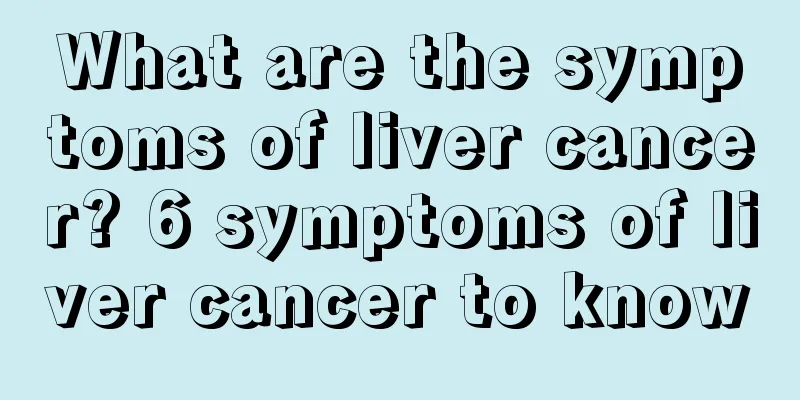Are there obvious symptoms of cervical cancer in the early stage? How to treat cervical cancer in the early stage

|
At present, cervical intraepithelial neoplasia is usually used clinically to reflect the evolution and progression of cervical cancer. Cervical intraepithelial neoplasia includes cervical atypical hyperplasia and cervical carcinoma in situ. Normally, the transformation of normal cervical epithelial cells into cervical intraepithelial neoplasia requires special environmental conditions, such as human papillomavirus infection. It can be said that without human papillomavirus infection, cervical cancer will not occur. However, even if infected with human papillomavirus, cervical cancer does not necessarily occur. Only repeated and continuous human papillomavirus infection is a prerequisite for cervical cancer. Because of repeated and persistent infection, cervical intraepithelial neoplasia may occur. This lesion will go through mild, moderate, severe and then invasive cervical cancer, which takes at least several years or even more than ten years. During this period, the lesion is in a changing state, that is, the lesion will regress, persist and progress. The most common clinical manifestations of cervical cancer Contact bleeding, especially vaginal bleeding after sexual intercourse. In late-stage cases, due to the rupture, necrosis and secondary infection of cancerous tissue, a large amount of purulent or rice-water-like vaginal discharge with a foul odor appears. However, cervical precancerous lesions and cervical intraepithelial neoplasia generally have no obvious symptoms and signs, and nearly half of the cervixes appear normal. Some patients may experience increased vaginal discharge, blood streaked vaginal discharge, contact bleeding, cervical hypertrophy, congestion, erosion, polyps and other manifestations of chronic cervical inflammation. Even if cervical intraepithelial neoplasia develops into cervical carcinoma in situ, half of the patients still have no clinical symptoms. Therefore, it is impossible to diagnose cervical intraepithelial neoplasia and cervical cancer by naked eye observation. At present, clinical diagnosis requires the use of a variety of auxiliary examination methods, such as cervical cytology, human papillomavirus examination, colposcopy combined with cervical biopsy, endocervical curettage and cervical cone excision. It can be seen that there are no obvious symptoms in the early stage of cervical cancer, and the harm of cervical cancer to women is extremely great. It can be said that cervical cancer is an invisible killer around women, so female friends must do a good job of prevention. If adverse symptoms occur, they should go to a regular hospital for treatment as soon as possible to avoid adverse consequences. |
Recommend
Benefits of Red Diamond Flower to People
Red diamond flower is a very popular green plant....
Symptoms of nail melanoma
Our bodies are often troubled by some inexplicabl...
What are the symptoms of interstitial pneumonia
The development of industry and steel industry in...
Be careful of cold viruses invading your heart. A cold may not last for a month or it may be myocarditis
A cold may seem like an ordinary minor illness, b...
I always feel choking in my throat. Could it be esophageal cancer?
The constant feeling of choking in the throat may...
Is melanoma an infectious disease?
Is melanoma an infectious disease? Malignant mela...
Essential fatty acids are like this
People's bodies need many nutrients to mainta...
This type of dizziness indicates that you have high blood pressure
Dizziness is something that most people will enco...
Is invasiveness of nasopharyngeal carcinoma common?
Nasopharyngeal carcinoma has strong local corrosi...
What are the nursing precautions for lung cancer patients? Five things to pay attention to when nursing lung cancer patients
I believe many friends know something about lung ...
What is the principle of scraping
In fact, many friends find scraping incredible be...
What are the benefits of an ebony comb
Ebony can actually be used to make a variety of t...
What to do if you have anal bloating
If a patient often feels a feeling of heaviness a...
What are some good treatments for patients with advanced ovarian cancer?
Ovarian cancer is a gynecological disease that wo...
I lost weight after I stopped exercising
Some people will exercise every day and insist on...









